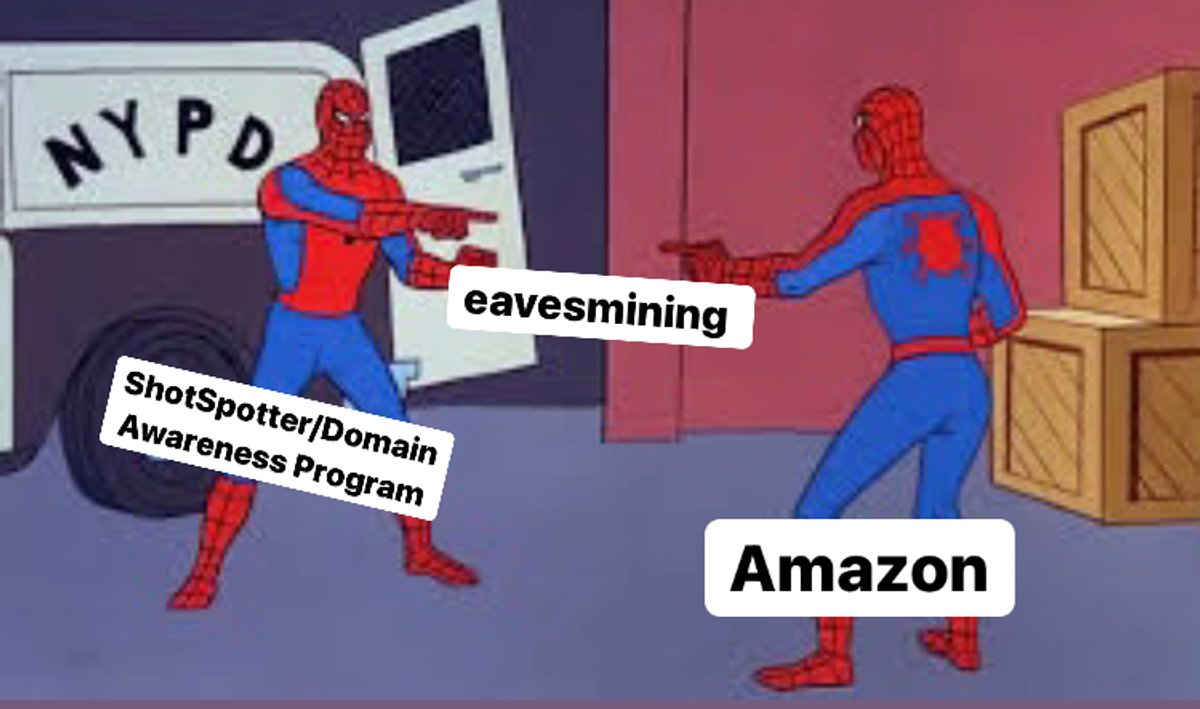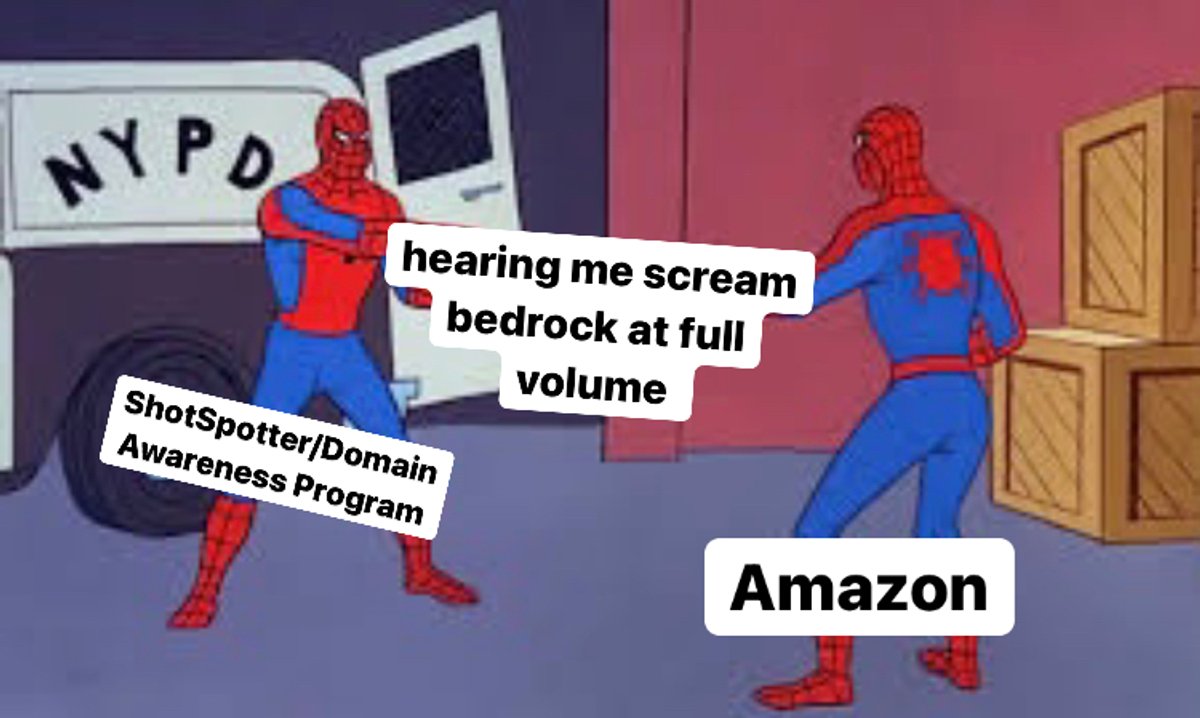






Izzi Stevenson delves into the corporate interests beneath the surface convenience of our home devices like Amazon's Alexa to reveal eavesmining, a data framework that represents a marked change in our domestic audio spaces.
My mother, the daughter of a blacklisted communist in the 60s, always tells a story of seeing FBI agents visiting her house and the self-regulation that came with knowing she was being watched. Almost 60 years later, having seen the three-inch FBI file of observations passed through my family’s generations, I wonder about the effects on her acoustic world after living under assumed wiretaps. Were her calls to a friend’s house exchanged in code, or made at all? Of course, she was not the target, but the knowledge of being watched shifted her mindset to one of anxiety and fear.

Source
The effects of surveillance power structures are noted in Foucault’s writing on the “panopticon”, a prison-like building designed for systems of control which, most notably, situates those in positions of power at the building’s center, able to view and watch inmates from all angles. The power structure operates on the notion that “[one] is seen, but [one] does not see, [one] is the object of information, never a subject in communication.” Through the act of constant visibility, those that are seen take responsibility for the power structures of their surveillance and “simultaneously [play] both roles, … the principle of [their] own subjection.”
We have gotten used to our own surveillance - to varying degrees of “permanent visibility,” much like Foucault's theoretical usage of the panopticon structure. Our virtual panopticon is often self-referenced through social media and entertainment. We even make games of our surveillance, for example, seeing how quickly an ad might pop up after we mention a product in conversation. Engagement with such vast networks of interaction also allows for both meaningful discussion and illumination on systemic issues within our realities, along with a communal regulation of behaviors and categorizations to go along with them.

Many people, especially of my generation, who have only known a post-9/11 level of surveillance, are desensitized to our constant monitoring. We try to push this reality from our thinking, freak out when it comes up in late-night conversations and find outrage when the monitoring actively targets and profiles members of our communities. More specifically, the active profiling of Black men and Black communities within crime prediction software, incorrect recognition in the data mining of darker skin tones within CCTV footage, and the extreme surveillance and harassment of Muslim communities, especially within NYC. The ACLU identifies the consequences of practices like these to include “stigma, interference with religious practice, community fear,” and, as we have begun to see in the last couple of years, encouragement of hate crimes against religious spaces.
Following a whiplash response to 9/11, Federal Homeland Security grants enabled the NYPD to lead the way in intensive, constant monitoring through CCTV, data-mining, audio recording, and targeted surveillance on specific groups. As technology advances and our society integrates tech into our daily lives, surveillance catches up as well. Specifically within NYC, surveillance serves as a constant source of new investment. Most recently, Mayor Eric Adams reported eyeing ten new drones at $70,000-$100,000 each. Equipped with night vision and connected to NYPD’s ShotSpotter Program, Adams would send the proposed drones to survey “high-crime rate” areas. Illustrating a commitment to surveillance over the needs of a city struggling in the wake of COVID, rapid development, and lowered resources. Funded by a $777 billion federal military budget in 2021 and multi-billion dollar city police budgets, privacy is no longer an assumed right.
From its start, audio surveillance has grown its practices through government and military interests. Similar to its portrayal in shows like Law and Order and The Wire, recording and its subsequent listening practices were primarily used to find specific intelligence utilized in criminal cases and military communication. However, with the growth of private companies marketing to our behaviors, a new framework of recording has emerged, one that combines semantic practices of listening, behavioral analysis, and data-mining. This framework, as researcher Stephen Neville coined, is called eavesmining. Neville introduces this concept as characterizing “a set of digital listening processes that affect acoustic space and embodied relationships with sound.”
In a new age of smart homes, and more specifically, voice-activated personal assistants, many people have welcomed auditory surveillance as the primary machinery operating the devices that make their lives easier. For an Alexa to open your blinds, start brewing coffee, and set off your children’s morning alarms with the utterance of the phrase, “good morning,” is undoubtedly revolutionary. Its role as a tool of added accessibility and convenience for people should not be downplayed. For these reasons and their marketed appeal as an object of high-tech ease, smart speakers have been welcomed with a reported 53.6 million Amazon Echo sales in 2020, a growing market with Amazon at the forefront.
This new market of audio surveillance not only serves a mechanical use in understanding commands and generating results, but has an active role in affecting the acoustic space of its environment. As Neville understands it, the acoustic space is affected by two separate movements: an input and an output. He states, “the first [is] by digitally scraping the auditory signatures of voices, words, and verbal cadences; and second, by circulating data as analog sound within the smart home, as articulated by the voice of Alexa and other mediatized “voices” played via the Echo (e.g., music, news, podcast, audiobooks, and radio).” With these products establishing one-party consent - a federal law mandating at least one participant in a conversation knowingly consents to their recording - at the time of purchase, a Smart speaker’s new home becomes its space to survey and interpret. Corporate interests maintain a database of audio recordings: examining recordings for user customization, keeping records of contacts, understanding shopping patterns, day to day behaviors, and in some instances releasing audio recordings in criminal subpoenas when requested by a judge. Acoustic space also shifts through “mishaps”: anecdotal evidence showing Alexa users’ contacts texted recordings of intimate moments, recordings of other Alexa users’ acoustic spaces played back through a separate device without provocation; and in the most common experience, Alexa turns on without the key phrase “Hey Alexa.” With the purchase of Alexas and other “smart home” devices, terms of service agreements become the consent mechanism in this constant of eavesmining within our homes.
Eavesmining, through its various utilizations, highlights differing power dynamics that depend on the intent of those surveilling. As previously described within the corporate sphere, eavesmining utilizes sonic observation in behavioral analysis and product creation. However, within the realm of government surveillance, eavesmining may take on the prejudice and profiling of the government entity funding it. This becomes evident with government surveillance initiatives such as ShotSpotter, a “precision-policing” tool that continually mines our acoustic space for sonic waveforms of gunshots to report location. As well as Shotspotter’s integration with the Domain Awareness Program, which mines CCTV and social media within various data mining frameworks to dispatch officers and isolate “potential” threats - proven to enable bias and profiling. Location also correlates with the power dynamics enabled through eavesmining. For the most part, government surveillance is primarily employed in our public spaces. However, within our homes smart devices are able to surveil, despite one-party consent laws, through clauses intentionally buried deeply in terms of service documents we tend to ignore.
From the active observation and “scraping” of our acoustic world to the input of corporations and governments through externalized sounds, such as Alexa’s voice or the noise of generators used to power programs like ShotSpotter, our sonic environment exists with eavesmining as a constant. Now, continually heard and aware of our surveillance, we live within established power dynamics much like that of Foucault’s analysis of the panopticon.
Acoustic space holds power, intimacy, community, and connection. Sound waves morph from their origins to our ears, bouncing off solids and permeating our spaces. Sound itself exists as an ever-present force, so in a world of constant sonic surveillance, it is vital to negotiate our own spaces of intimacy, where our interaction with eavesmining can exist as an active choice. Solutions may seem out of reach within a sonic panopticon, but perhaps acknowledgement of the power structures mining through our acoustic world can be our first steps.

Image provided by author

Image provided by author







